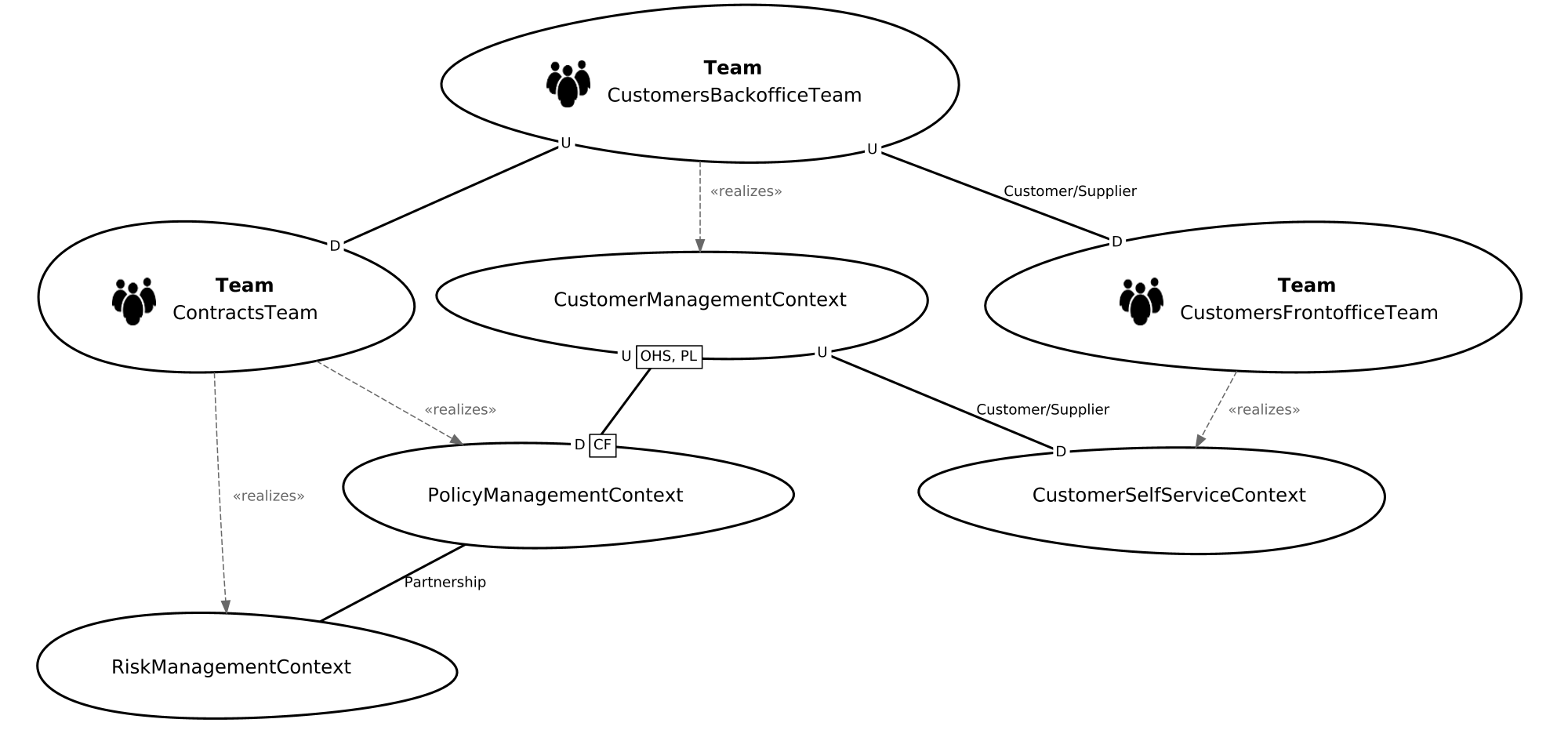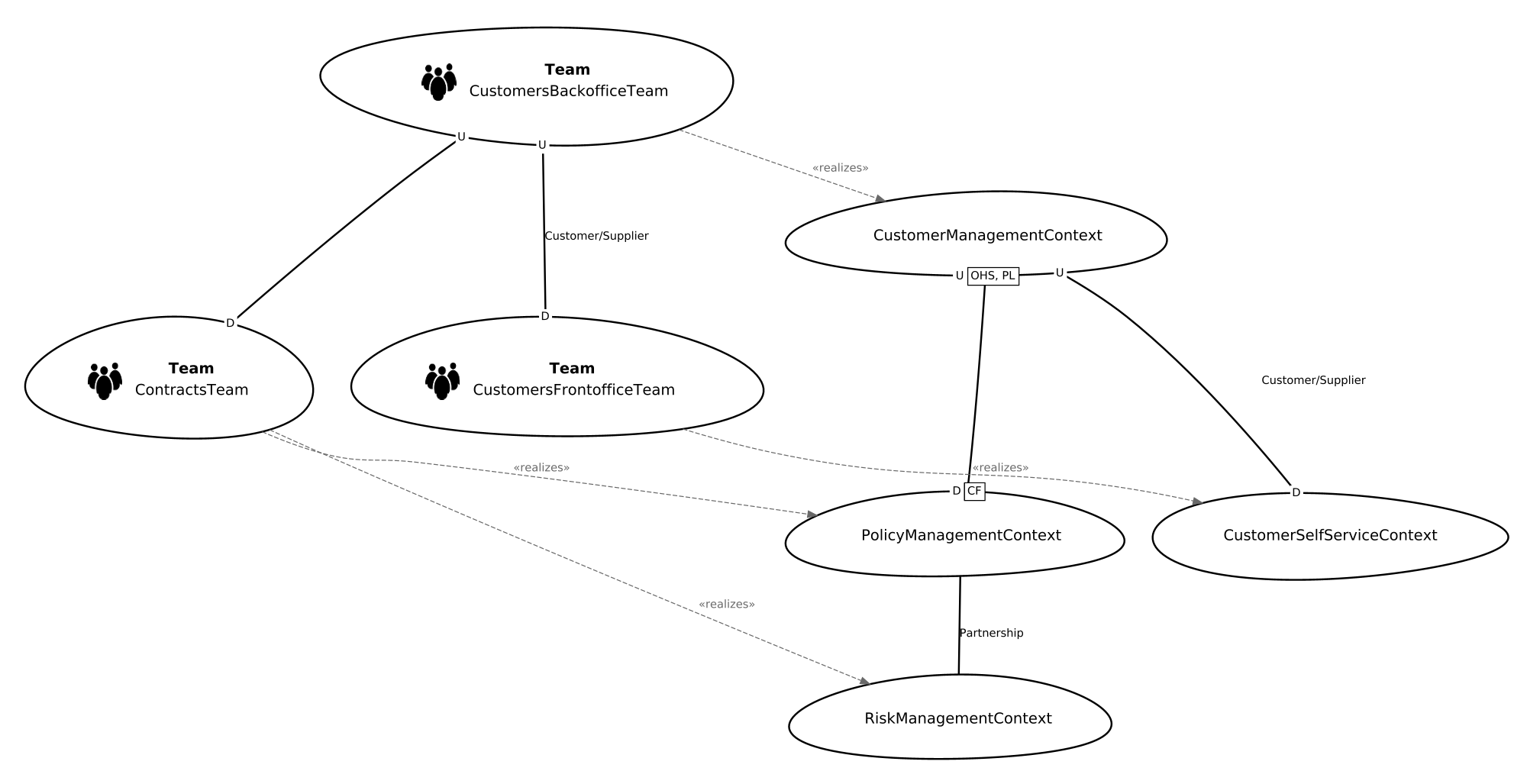Hi @joaoasrosa
Which output have you expected? The following one I created for the README:?

This is actually a manually created one... :) The Context Map generator does not support generating this yet. Is the graphic above what you expected or have I misunderstood the issue here?



Hi @stefan-ka ,
After the creation of the CLI example, I was playing around with the examples. I notice the example Insurance-Example_Team-Map.cml doesn't generate the expected result (including the teams).
I'm wondering if it is an outdated version of the Context Mapper.